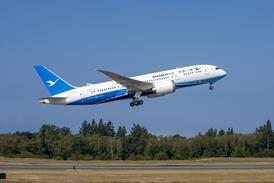The McDonnell Douglas Helicopter Systems MD900 Explorer has finally received US Federal Aviation Administration certification to be flown under instrument-flight rules (IFR) by a single pilot.
The certification was originally scheduled for around April 1996, but the complexity of integrating the IFR package, plus unexpected problems with the attitude-heading-reference system (AHRS), led to prolonged delays. AlliedSignal, which developed the package, discovered that the LCR 92S AHRS, produced by Litef of Germany, required recertificating to new HERF standards.
"Development of the IFR package was a challenge because the requirements for helicopters are more stringent. We had to make dual systems, and even the handling qualities had to be changed, which required the development of a stability augmentation system [SAS]," says AlliedSignal general-aviation avionics sales manager, Frank Foiles. The SAS was designed to reduce pilot workload in IFR conditions.
Three avionics packages have been developed for the IFR version, all of them based on the AlliedSignal Bendix/King KFC 900 automatic flight-control system (AFCS) which incorporates the SAS, an autopilot and flight director. The AFCS has several modes including heading hold, and bank-angle limiting, all-angle navigation-mode capture and tracking, vertical modes with altitude hold, altitude preselect and capture, vertical-speed select and hold, and indicated airspeed (IAS) hold.
Approach mode is certificated to a 6¹ angle of descent, and has an autolevel feature at 15m (50ft). The flight director can be flown by the pilot, the autopilot or the pilot in conjunction with the SAS. Key operations are performed via a thumb-actuated "coolie hat" control switch on the cyclic control, which enables the pilot to modify pitch attitude, altitude (10ft adjustment per click), vertical speed, IAS and heading bug.
The yaw-damper computer controls both the helicopter's fins, but the SAS - when engaged - takes control of the right fin, which controls yaw and lateral acceleration. The air-data system incorporated into the package provides data into the AFCS which allows much closer control over the gain change in the fin.
The autopilot is also linked into control of the tailboom-mounted thruster, which helps co-ordinate directional control with the fins.
The AFCS also provides auto-trim functions for the pitch, roll and yaw axes. The EFS 40 electronic flight information system offers full flight-director functionality. The pitch-attitude display can be adjusted with the flick of a switch on the collective to compensate for the 8-10¹ nose-own pitch angle during normal helicopter cruising conditions.o
Source: Flight International











































